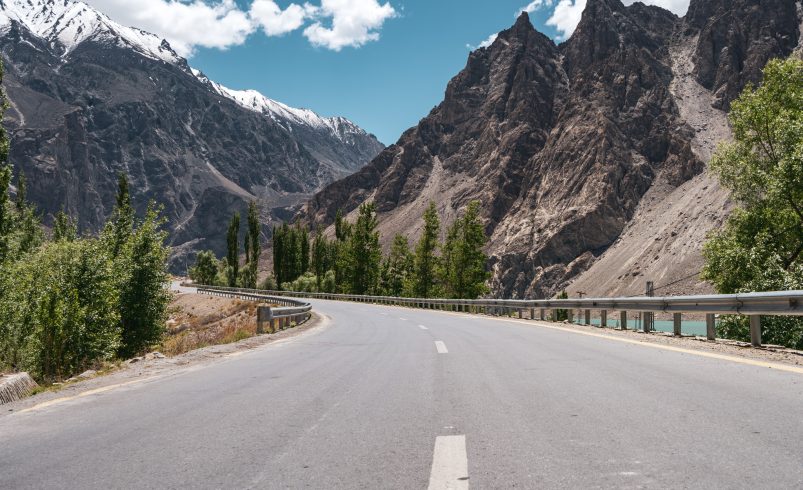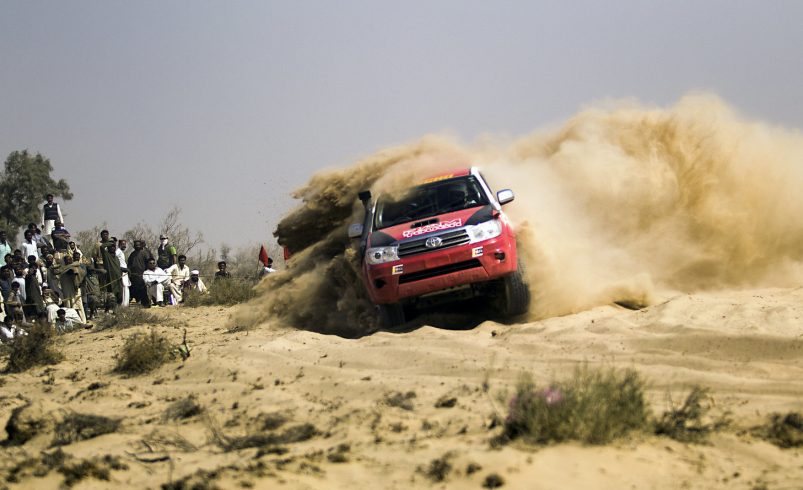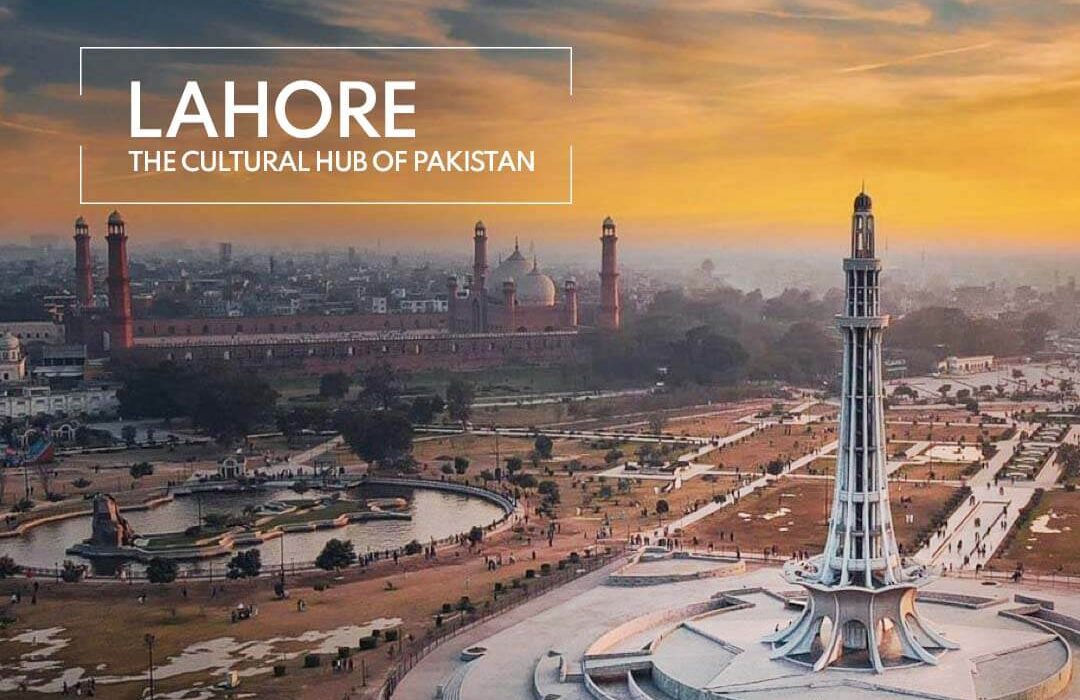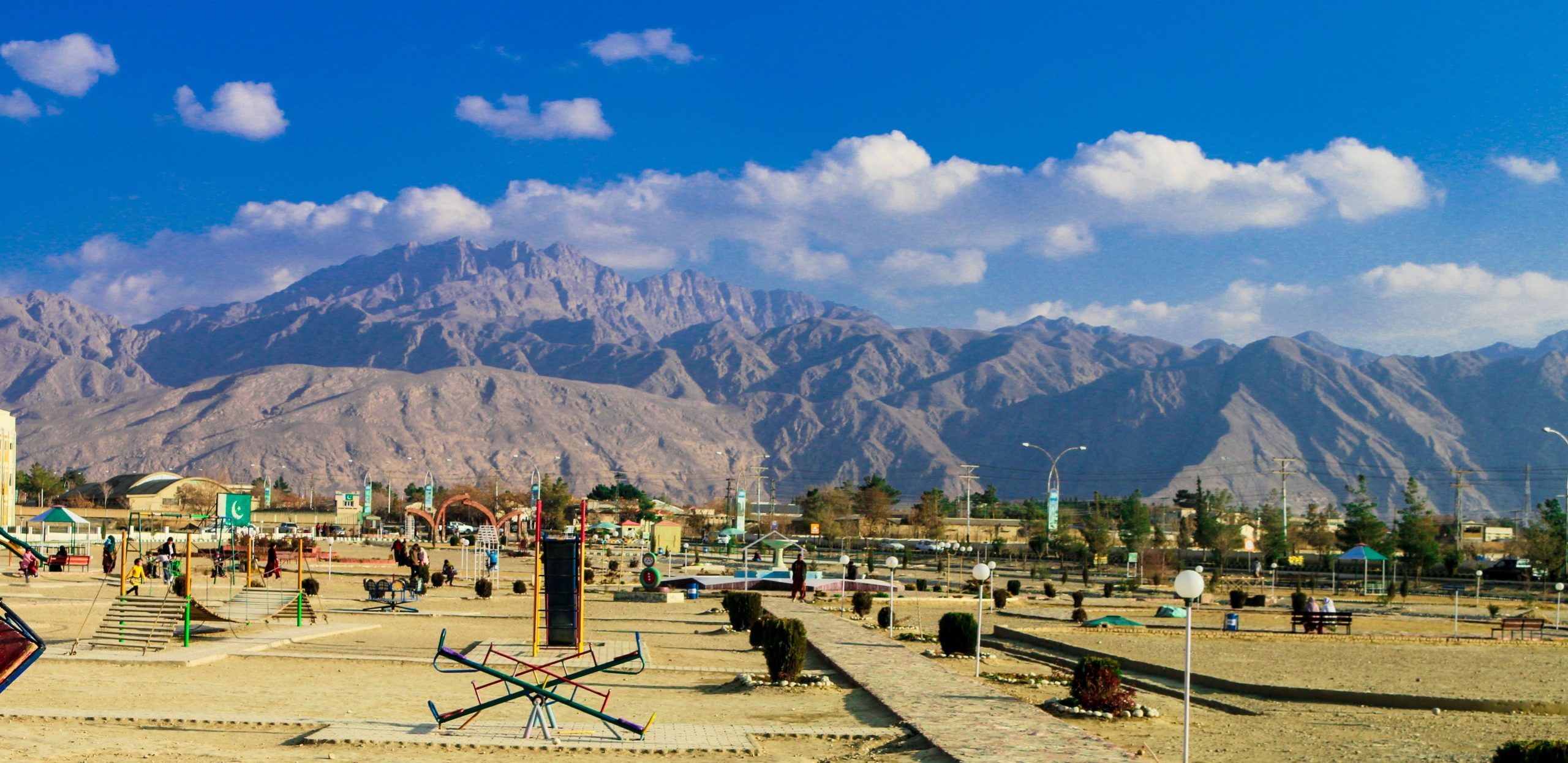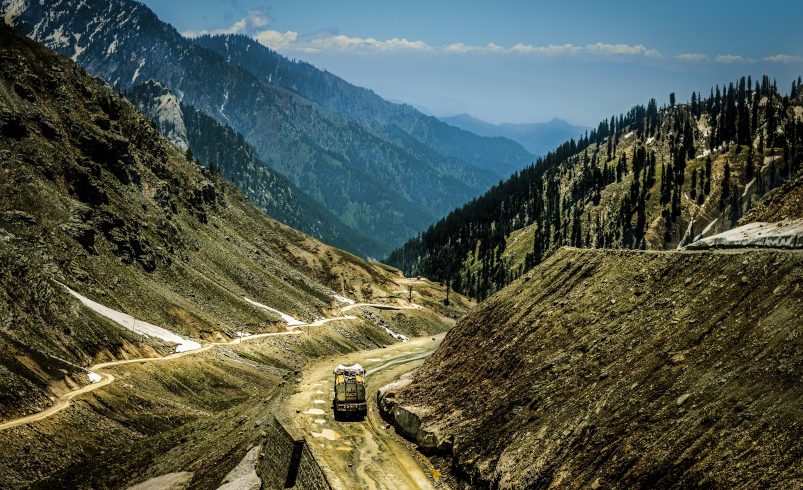
- August 6, 2025
🏞️ Introduction
The majestic and towering landscapes of Pakistan’s Highest Mountain Passes have captivated travelers, historians, and adventure seekers for centuries. Nestled within the rugged terrains of the Himalayas, Karakoram, and Hindu Kush mountain ranges, these high-altitude gateways serve as vital corridors connecting remote valleys, ancient trade routes, and culturally rich regions. From the world-renowned Khunjerab Pass, which links Pakistan with China, to the scenic Babusar Pass that gracefully arches over the Kaghan Valley into Gilgit-Baltistan, every pass tells a unique story of geography and heritage.
Traversing these mountain passes is not just a journey through altitudes but a voyage into Pakistan’s rich tapestry of landscapes — icy glaciers, lush meadows, roaring rivers, and silent alpine deserts. Whether you’re an avid trekker aiming to conquer the challenging Hispar Pass or a leisure traveler desiring the serene beauty of Shandur Pass, exploring Pakistan’s Highest Mountain Passes offers an unparalleled adventure.
In this comprehensive travel guide, we will delve into the most iconic mountain passes of Pakistan, their historical significance, best times to visit, key attractions, and essential tips to make your journey safe and unforgettable.
🧭 Importance of Mountain Passes in Pakistan’s Geography and Culture
Mountain passes have played an indispensable role in shaping Pakistan’s geography and cultural identity. Strategically nestled among some of the highest mountain ranges in the world, these passes have served as natural gateways that connect otherwise isolated regions. Geographically, they facilitate the flow of rivers, create climatic divides, and act as vital transport corridors linking remote valleys to major cities and international borders.
Historically, Pakistan’s mountain passes have been crucial in the movement of ancient caravans, traders, and conquerors. The Silk Route, a legendary trade network, weaves through many of these passes, bringing with it not just goods but a fusion of art, language, and culinary traditions. Passes like Khunjerab and Mintaka were pivotal in fostering cross-border trade with China and Central Asia, which has left an indelible mark on the architecture, folklore, and crafts of the northern regions.
Culturally, these high-altitude crossings are more than just pathways; they are lifelines for mountain communities. Festivals such as the Shandur Polo Festival are celebrated atop these passes, symbolizing the blend of tradition, sportsmanship, and community spirit. Seasonal migrations, local folklore, and traditional polo matches are deeply connected to the existence of these natural routes.
Furthermore, mountain passes play a significant ecological role by providing unique habitats for diverse flora and fauna. Regions like Khunjerab National Park are home to endangered species like the snow leopard and Marco Polo sheep, making these passes essential conservation corridors.
In modern times, with infrastructural advancements like the Lowari Tunnel, the importance of these passes continues to evolve. They remain pivotal for boosting tourism, enhancing trade links under initiatives like the China-Pakistan Economic Corridor (CPEC), and preserving the rich cultural landscapes of the highlands.
🏔️ Babusar Pass – Gateway to Gilgit-Baltistan
Babusar Pass, at an altitude of 4,173 meters (13,691 ft), is the highest point in the Kaghan Valley road network. It acts as a bridge between Khyber Pakhtunkhwa’s lush Kaghan Valley and Gilgit-Baltistan’s Chilas district.
🗓️ Best Time to Visit Babusar Pass
The pass opens from June to early October. The snow melts by late May, making the road accessible. July and August are the peak tourist months, offering green landscapes and wildflowers in full bloom.
🌄 Key Attractions at Babusar Pass
- Lulusar Lake: A mirror-like alpine lake that reflects the surrounding snow-clad peaks.
- Nanga Parbat Viewpoint: On a clear day, you can witness a panoramic view of the Killer Mountain, Nanga Parbat (8,126m).
- Babusar Top Meadows: Ideal for short hikes, picnics, and photography, offering sweeping views of valleys and peaks.
- Stone Cairns: Historical stone structures built by ancient travelers to mark the trail.
💡 Travel Tip
Facilities at Babusar Pass are minimal. Carry snacks, water, and ensure your vehicle is well-fueled before ascending. Mobile signals are weak; plan accordingly.
🚧 Khunjerab Pass – The World’s Highest Paved Border Crossing
Khunjerab Pass stands at a jaw-dropping 4,693 meters (15,397 ft). It marks the border between Pakistan and China’s Xinjiang region, serving as a vital link on the Karakoram Highway (N-35).
🗓️ Best Time to Visit Khunjerab Pass
The pass remains open from May to November, but the most scenic and safe months for visiting are between June and September. Beyond November, heavy snowfall leads to its closure.
🌄 Key Attractions at Khunjerab Pass
- Pakistan-China Friendship Gate: A symbolic gate that represents the diplomatic ties between the two nations.
- Khunjerab National Park: Spanning 2,270 sq. km, it is home to endangered species like the snow leopard, Marco Polo sheep, and Himalayan ibex.
- High Altitude Plains: Experience surreal landscapes with barren mountains and patches of grassy plains, often grazed by yaks and sheep.
- Zero Point Market: A small bazaar where travelers can buy Chinese goods and souvenirs.
💡 Travel Tip
Oxygen levels are significantly low. Avoid prolonged stays if you feel breathless. Portable oxygen cylinders are advisable for sensitive individuals. No fuel stations after Sost; ensure refueling before the ascent.
🏇 Shandur Pass – The Roof of the World
Shandur Pass is perched at 3,700 meters (12,139 ft), linking Chitral in Khyber Pakhtunkhwa with Gilgit-Baltistan’s Ghizer District. It’s famously known for hosting the annual Shandur Polo Festival, a legacy of freestyle mountain polo.
🗓️ Best Time to Visit Shandur Pass
Mid-July is the prime time, coinciding with the Polo Festival. The weather during this time is pleasantly cool during the day but can be freezing at night.
🌄 Key Attractions at Shandur Pass
- Shandur Polo Ground: The world’s highest polo ground where teams from Chitral and Gilgit battle in traditional freestyle polo matches.
- Shandur Lake: A beautiful alpine lake surrounded by lush meadows, perfect for camping and fishing.
- Trekking Routes: Multiple trekking paths lead into nearby valleys, offering splendid views of the Hindu Raj mountains.
- Local Cultural Exhibitions: During the Polo Festival, stalls exhibit local handicrafts, traditional music, and dance.
💡 Travel Tip
Accommodation is mostly in the form of camps. Temperatures can plummet at night; thermal sleeping bags and layered clothing are essential.
🛣️ Lowari Pass and Lowari Tunnel – Historic Gateway to Chitral
Lowari Pass, with an altitude of 3,118 meters (10,230 ft), historically connected Dir with Chitral. The Lowari Tunnel (8.6 km long) has replaced the dangerous and treacherous old Lowari Pass route, providing a safer alternative.
🗓️ Best Time to Visit Lowari Pass
The tunnel is operational year-round, but the scenic Lowari Pass route is open from late May to early October, depending on snowfall.
🌄 Key Attractions at Lowari Pass
- Scenic Hairpin Bends: The drive through the old pass offers thrilling zigzag roads with sharp curves.
- Viewpoints Overlooking Dir Valley: Perfect spots for panoramic photography.
- Dense Pine Forests: The drive is flanked by thick forests, rich in biodiversity.
- Wildlife Sightings: Spot Himalayan monals, snow leopards, and wolves if lucky.
💡 Travel Tip
While the tunnel is safer, adventure lovers should attempt the pass only with experienced drivers and well-maintained 4×4 vehicles. Roads can be perilous after rainfall.
🥾 Hispar Pass – For Hardcore Trekkers
At 5,151 meters (16,899 ft), Hispar Pass is among the most challenging glacial passes, connecting Nagar Valley (Hispar) to Baltistan via the Biafo Glacier. This route is part of the legendary Snow Lake Trek.
🗓️ Best Time to Visit Hispar Pass
Mid-July to late August is suitable when the glaciers are less hazardous, and the weather is relatively predictable.
🌄 Key Attractions at Hispar Pass
- Snow Lake (Lukpe Lawo): A vast glacial basin often considered one of the most beautiful high-altitude spots in the world.
- Biafo and Hispar Glaciers: Combined, these glaciers form the world’s longest continuous glacier trek outside the polar regions.
- Uninterrupted Views of Majestic Peaks: Witness the mighty peaks of the Karakoram, including Baintha Brakk (The Ogre).
- Remote Campsites: Experience pristine wilderness, far from any human settlement.
💡 Travel Tip
Only seasoned trekkers with prior high-altitude trekking experience should attempt Hispar Pass. Comprehensive gear, professional guides, porters, and contingency planning are mandatory.
🏕️ Burzil Pass – The Route to Astore and Deosai
Burzil Pass, at 4,100 meters (13,451 ft), connects the breathtaking Astore Valley with the expansive Deosai Plains. Historically, it was a strategic military route for British expeditions.
🗓️ Best Time to Visit Burzil Pass
From June to September, the pass is carpeted with colorful wildflowers and offers the best visibility.
🌄 Key Attractions at Burzil Pass
- Sheosar Lake: A high-altitude lake famous for its crystal-clear waters and Nanga Parbat reflections.
- Deosai National Park: Known for its unique ecosystem, including Himalayan brown bears.
- Panoramic Viewpoints: Several spots along the pass provide sweeping views of the surrounding peaks and valleys.
- Historical British Encampments: Ruins of old military outposts can still be seen along the route.
💡 Travel Tip
The road conditions are rough, with many unpaved and muddy sections. A sturdy 4×4 is a must. It’s advisable to carry extra fuel and supplies as facilities are scarce.
🛡️ Khyber Pass – The Historic Gateway to Central Asia
The Khyber Pass (1,070m) connects Peshawar with Jalalabad (Afghanistan). Historically, it has been the most significant military and trade route between Central Asia and South Asia, with a rich history of conquests and migrations.
Best Time to Visit
October to March is ideal, as the summer months can be extremely hot. Winter offers clear skies and cooler temperatures.
Key Attractions
- Jamrud Fort
- Michni Post (viewpoint near the Afghan border)
- Traditional tribal settlements
- Remnants of the old railway line
Travel Tip
Always coordinate with local authorities or tour operators for a guided visit, as certain areas may have security restrictions.
🏔️ Mastuj Pass and Broghil Pass – Remote Alpine Routes of Chitral
Situated in Upper Chitral, Mastuj Pass leads to the remote Yarkhun Valley, while Broghil Pass (3,798m) connects to Afghanistan’s Wakhan Corridor. They are among Pakistan’s least-explored alpine routes.
Best Time to Visit
June to September when snow has melted, making the passes accessible for trekkers.
Key Attractions
- Broghil Valley National Park
- Glacial lakes and alpine meadows
- Nomadic Wakhi settlements
- Yak polo during local festivals
Travel Tip
Pack essential trekking gear and ensure physical fitness. Due to the remoteness, traveling with a local guide is highly recommended.
🌲 Pir Panjal Pass – The Lush Gateway of Azad Kashmir
Known as Peer Ki Gali, this pass connects Rawalakot (AJK) to Shopian (Indian-administered Kashmir). It lies at an elevation of 3,490m and is part of the ancient Mughal Road.
Best Time to Visit
May to October, when the route is clear of snow and the pine forests are lush.
Key Attractions
- Mughal-era heritage sites
- Dense pine and deodar forests
- Panoramic views of the Pir Panjal Range
Travel Tip
Check the latest travel advisories due to its proximity to the Line of Control (LoC). It’s best visited during daylight hours.
🏞️ Haji Pir Pass – The Sacred Crossing of Haveli District
Located at 2,637 meters, the Haji Pir Pass connects Uri (Indian-administered Kashmir) with Haveli District (AJK). It holds historical military importance.
Best Time to Visit
Late spring to early autumn (May to October) for favorable weather conditions.
Key Attractions
- Haji Pir Shrine
- Lush green meadows and ridges
- Traditional Pahari villages
Travel Tip
Due to its strategic location, visiting this area requires prior permission from local authorities. Traveling with locals is advisable.
🏕️ Shounter Pass – Trekking Gateway to Astore Valley
The Shounter Pass (4,420m) links Neelum Valley (AJK) to Astore (Gilgit-Baltistan). It’s a high-altitude trek known for its raw, untouched beauty.
Best Time to Visit
Mid-July to mid-September, when the trail is free of snow and weather conditions are stable.
Key Attractions
- Shounter Lake
- Views of Sarwali Peak
- Alpine meadows and glacial streams
Travel Tip
This trek is for experienced hikers. Ensure you have proper trekking gear and hire a local guide for safety.
🏜️ Bolān Pass – The Historic Trade Corridor of Balochistan
The Bolān Pass (1,793m) is a historic route in Balochistan, connecting Sibi with Quetta. It has been a gateway for invaders and traders heading towards the Indian subcontinent.
Best Time to Visit
October to March offers cooler temperatures and more comfortable travel conditions.
Key Attractions
- British colonial railway tunnels
- Scenic rugged cliffs and gorges
- Historical forts
Travel Tip
Travel during daylight and ensure your vehicle is well-maintained, as facilities are sparse along the route.
🏞️ Khojak Pass – The Trade Artery of Quetta-Chaman Route
Connecting Quetta to Chaman, the Khojak Pass (2,290m) is significant for trade and transit, especially with Afghanistan.
Best Time to Visit
Spring and autumn are the best seasons, avoiding the summer heat and winter chill.
Key Attractions
- Khojak Tunnel (3.9 km)
- Panoramic desert-mountain landscapes
- Traditional Pashtun villages
Travel Tip
The road is busy with trade convoys; hence, cautious driving is essential. Plan early morning departures for safer travel.
🌄 Harnai Pass and Ziarat Passes – Scenic Gateways of Central Balochistan
The Harnai Pass connects Quetta to Harnai Valley, while the Ziarat Pass leads to the hill station of Ziarat, famous for its juniper forests.
Best Time to Visit
October to March for Ziarat (snow lovers prefer December-January). Harnai is best during spring and autumn.
Key Attractions
- Quaid-e-Azam Residency in Ziarat
- Juniper forests
- Colonial-era railway tunnels in Harnai
Travel Tip
The mountain roads can be narrow and winding; ensure your vehicle is in top condition and avoid night travel.
🗺️ Distance Table for Major Mountain Passes
| Mountain Pass | Nearest Major City / Region | Distance from Islamabad (km) |
|---|---|---|
| Babusar Pass | Naran / Kaghan Valley | 302 km |
| Khunjerab Pass | Hunza (Sost) / Gilgit-Baltistan | 725 km |
| Shandur Pass | Chitral | 531 km |
| Lowari Pass / Tunnel | Dir / Chitral | 380 km |
| Hispar Pass | Nagar Valley | 570 km |
| Burzil Pass | Astore | 520 km |
| Khyber Pass | Peshawar | 170 km |
| Mastuj Pass | Mastuj (Upper Chitral) | 540 km |
| Broghil Pass | Broghil / Wakhan Corridor | 580 km |
| Pir Panjal Pass (Peer Ki Gali) | Rawalakot (AJK) | 130 km |
| Haji Pir Pass | Haveli District (AJK) | 160 km |
| Shounter Pass | Neelum Valley (AJK) – Astore | 400 km |
| Bolān Pass | Sibi → Quetta | 690 km |
| Khojak Pass | Quetta → Chaman | 700 km |
| Harnai Pass | Harnai Valley | 965 km |
| Ziarat Pass | Ziarat Hill Station | 879 km |
❓ FAQs
❓ What is the highest mountain pass in Pakistan and why is it famous?
The Khunjerab Pass, standing at 4,693 meters (15,397 ft), is the highest paved international border crossing in the world. Not only does it serve as a gateway between Pakistan and China, but it also marks the highest point on the legendary Karakoram Highway. Due to its strategic importance and breathtaking alpine landscapes, it has become a must-visit destination for adventure travelers.
❓ When is the best time to explore Pakistan’s highest mountain passes?
If you’re planning to visit Pakistan’s highest mountain passes, the period from June to September is ideal. During these months, snow recedes, making passes like Babusar Pass, Shandur Pass, and Lowari Pass accessible. Conversely, Khunjerab Pass is open until November but is best visited during summer for clearer views and safer roads.
❓ Do I need any special permits to access these mountain passes?
Interestingly, most mountain passes in Pakistan such as Babusar Pass, Shandur Pass, and Burzil Pass do not require special permits. However, when visiting Khunjerab Pass, travelers must carry valid identification like CNIC or a passport due to its status as an international border post. For trekking routes like Hispar Pass, it is highly recommended to arrange permits through local trekking agencies.
❓ How safe is it to travel through Pakistan’s high-altitude mountain passes?
Generally, traveling through Pakistan’s high mountain passes is safe, provided travelers take necessary precautions. Firstly, always check weather forecasts before setting out, as sudden snowfalls can block roads. Secondly, ensure your vehicle is in excellent condition, especially when heading towards challenging routes like Hispar Pass and Burzil Pass. Lastly, hiring local guides is advisable for remote passes to navigate unfamiliar terrains safely.
❓ Can I drive a regular car through Babusar Pass and Lowari Tunnel?
Yes, you can. Babusar Pass is accessible by regular sedans during the open season (June-October), but cautious driving is necessary due to steep ascents. In contrast, the Lowari Tunnel offers a safe and all-weather passage to Chitral, suitable for all types of vehicles. Nonetheless, for adventure lovers wishing to drive the old Lowari Pass route, a 4×4 vehicle is highly recommended due to its rugged terrain.
❓ Are facilities like fuel stations and eateries available on these routes?
Facilities become scarce as you ascend the mountain passes. For example, after crossing Naran, there are no fuel stations until you descend from Babusar Pass into Chilas. Similarly, the last refueling point before Khunjerab Pass is at Sost. Eateries are basic, mostly small dhabas offering local food. Therefore, it is essential to stock up on fuel, water, and snacks beforehand.
❓ Is altitude sickness a concern while visiting these high-altitude passes?
Absolutely. Due to the high elevations of Khunjerab Pass, Hispar Pass, and Burzil Pass, travelers may experience symptoms of altitude sickness like headaches, dizziness, and breathlessness. It is recommended to ascend gradually, stay hydrated, and carry portable oxygen cylinders if you have known respiratory issues.
❓ What kind of clothing and gear should I pack for these passes?
Given the unpredictable mountain weather, layered clothing is a must. Pack thermal inners, fleece jackets, waterproof outerwear, gloves, and woolen caps. For trekking passes like Hispar, essential gear includes trekking poles, glacier glasses, crampons, and insulated sleeping bags.
❓ Are these mountain passes family-friendly for road trips?
Passes like Babusar Pass and Shandur Pass are excellent for family road trips, offering stunning landscapes and safe driving routes during the open season. However, high-altitude treks like Hispar Pass are suited only for seasoned trekkers due to their challenging conditions.
❓ Can tourists combine multiple passes in a single road trip itinerary?
Yes, many travelers plan extended road trips covering multiple passes. A popular route is starting from Islamabad to Babusar Pass, then proceeding towards Khunjerab Pass via Hunza, and circling back via Shandur Pass to Chitral. This journey not only showcases the diversity of Pakistan’s landscapes but also offers rich cultural experiences.
❓ What are the emergency contacts and facilities in case of an accident or health issue?
Emergency services are limited in remote areas. Always keep contact numbers of Rescue 1122 (Punjab & KP regions), GB Emergency Helpline (1222), and local police stations. For treks like Hispar, satellite phones are advisable. Additionally, carry a personal first aid kit and basic medications.
❓ How long does it take to reach Khunjerab Pass from Islamabad?
The journey from Islamabad to Khunjerab Pass is approximately 870 km and takes about 18-20 hours by road. Most travelers break the journey with overnight stays in Naran, Gilgit, or Hunza Valley.
❓ What is unique about the Shandur Polo Festival?
The Shandur Polo Festival is a historic event where freestyle polo, known locally as “the game of kings,” is played at the world’s highest polo ground. Beyond the thrilling matches, visitors can enjoy folk music, cultural dances, and traditional food stalls, making it a truly immersive experience.
❓ Is it possible to trek Hispar Pass without a guide?
While technically possible for very experienced mountaineers, it is strongly advised not to attempt the Hispar Pass trek without a licensed local guide. The glacier crossings, crevasse dangers, and unpredictable weather make it too risky for solo expeditions.
❓ Are drones allowed for photography at these mountain passes?
Drone usage at most mountain passes is allowed, but sensitive border areas like Khunjerab Pass have restrictions. It is advisable to seek permission from local authorities before flying drones, especially near military installations.
❓ What wildlife can travelers expect to see in these regions?
Travelers might spot Himalayan ibex, snow leopards, marmots, golden eagles, and Marco Polo sheep. National Parks like Khunjerab and Deosai are particularly rich in wildlife diversity.
❓ Are mobile networks and internet services available on these passes?
Mobile coverage is patchy. While you might get intermittent signals near Babusar Pass and towns close to Lowari Tunnel, regions like Khunjerab Pass and Hispar Glacier are completely off-grid. Carrying a satellite phone is advisable for trekkers.
❓ What are the cultural etiquettes travelers should be aware of while visiting mountain regions?
Respect local customs by dressing modestly, seeking permission before photographing people, and supporting local businesses. A warm greeting in local languages like “Salam” or “Khush Amdeed” is always appreciated.
❓ How challenging is the drive through Burzil Pass compared to Babusar Pass?
Driving through Burzil Pass is considerably tougher than Babusar Pass due to its rough, unpaved roads, frequent landslides, and lack of developed infrastructure. A 4×4 vehicle with an experienced driver is essential for a safe journey through Burzil.
❓ What makes Pakistan’s Highest Mountain Passes a must-visit for adventure travelers?
The sheer diversity—from the high-altitude paved border at Khunjerab Pass to the wild, untamed glaciers of Hispar—makes Pakistan’s Highest Mountain Passes a haven for adventure seekers. Scenic drives, cultural encounters, high-altitude trekking, and raw natural beauty create an unparalleled travel experience.
❓ Can solo travelers plan a safe trip to these mountain passes?
Solo travelers can safely visit accessible passes like Babusar and Shandur during peak seasons. However, for remote treks like Hispar Pass, it’s highly recommended to join group expeditions or hire a local guide for safety and logistical support.
🏁 Conclusion
Pakistan’s Highest Mountain Passes are more than just routes connecting regions; they are gateways to adventure, culture, and nature’s raw beauty. From the bustling border at Khunjerab to the serene plains of Deosai via Burzil, these passes offer travelers a chance to witness the true grandeur of Pakistan’s northern landscapes. For those seeking adrenaline, Hispar Pass awaits with its icy challenges, while Babusar and Shandur invite you to scenic drives and cultural festivals. Embark on a journey through these majestic passes, and you’ll return with memories etched forever in your heart.


